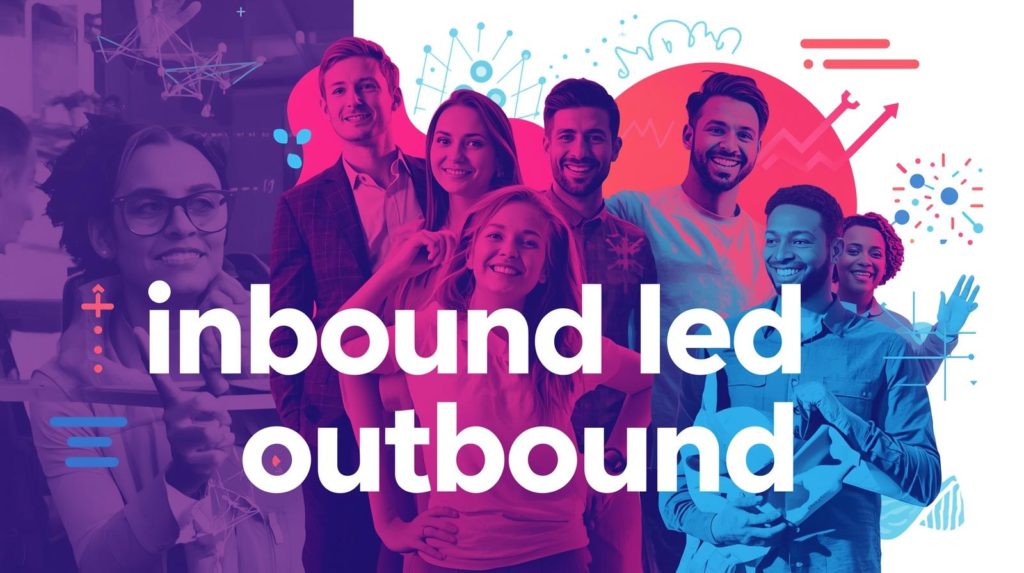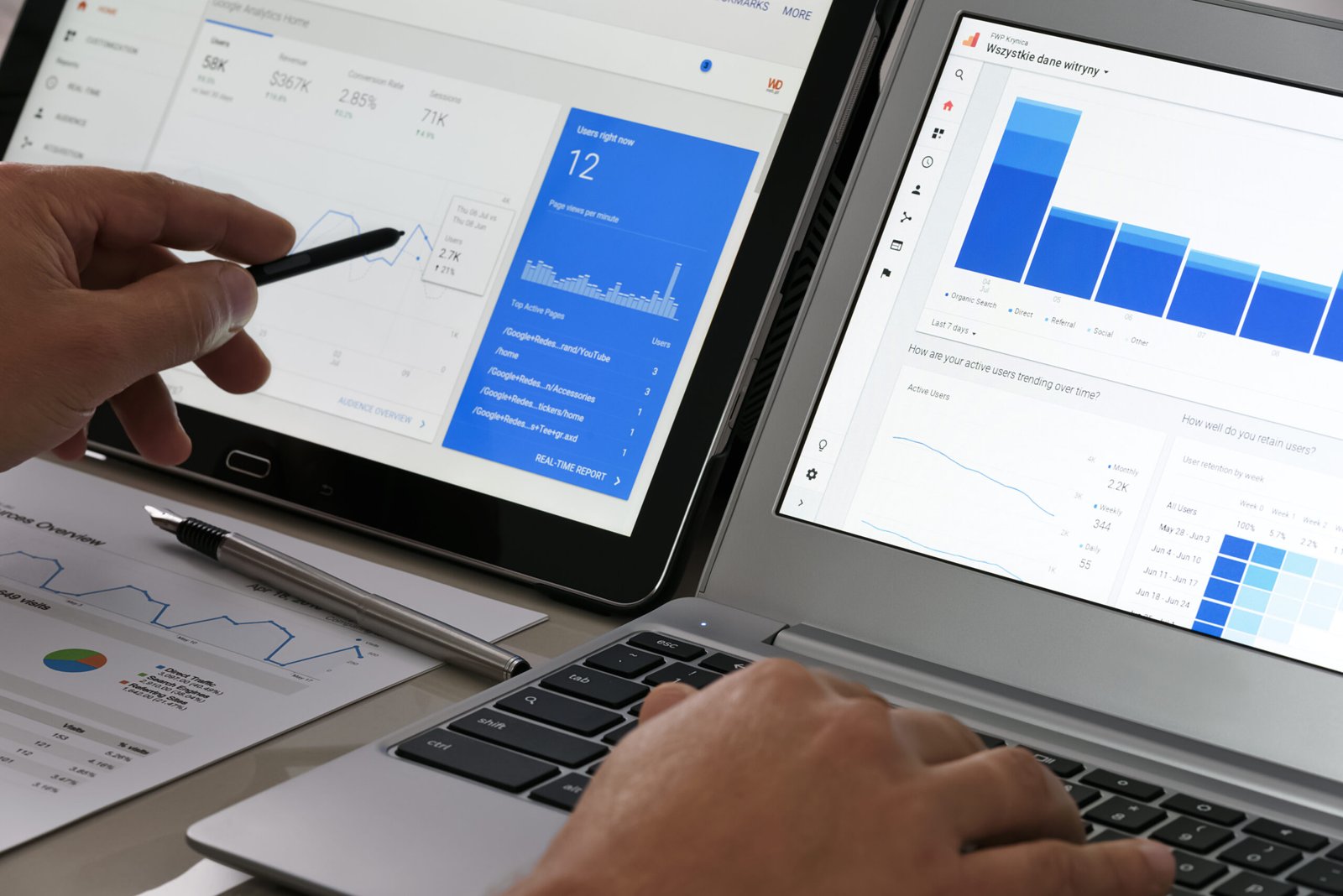
What Is Inbound Led Outbound?
Inbound led outbound is a growth strategy that combines the strengths of inbound marketing and outbound prospecting. It focuses on attracting potential customers through inbound efforts and then leveraging that interest to initiate an outbound sales motion. This approach emphasizes identifying and engaging with contacts who are showing interest in a company’s offerings, making outbound efforts more effective and, if executed well, increasing sales pipeline.
Understanding Inbound vs Outbound
Inbound
Inbound marketing involves attracting customers through content and advertising. It is a one-to-many approach that focuses on creating content that resonates with a market segment and placing that content in front of the right potential buyers. Key tactics leveraged by inbound marketing teams include:
- Search Engine Marketing (SEM): Using targeted ads and search engine optimization (SEO) on platforms like Google and Bing to reach potential customers actively searching for solutions that align with a company’s products.
- Generative Engine Optimization (GEO): Creating content designed to be picked up by chatbots like ChatGPT or in Google’s AI overviews.
- Social Media Marketing (SMM): Promoting content on social media platforms to engage target buyer personas and ideal customer profile (ICP) accounts with both paid and organic content.
- Email Marketing: Nurturing leads through personalized email campaigns.
Outbound
Outbound sales, in contrast, is a one-to-one approach that involves reaching out to potential customers directly. This is often done by Sales Development Representatives (SDRs) or Business Development Representatives (BDRs). In some companies, Sales Representatives or Account Executives (AEs) also engage in their own outbound efforts, often referred to as prospecting. Common outbound tactics include:
- Cold Calling: The classic method of reaching out to potential customers.
- Cold Emails: One-to-one emails sent to prospects.
- SMS Texting: An increasingly popular method for direct communication.
- LinkedIn InMail and DMs: Direct messages sent to prospects on LinkedIn.
It’s not uncommon for outbound teams to set goals, such as calling 50 people a day. While outbound can be expensive due to the costs associated with hiring BDRs, it can also be highly effective when executed properly.
Understanding Inbound vs Inbound Led Outbound
The primary difference between inbound and inbound led outbound lies in the integration of both inbound and outbound strategies. Inbound often focuses solely on attracting leads through content, while inbound led outbound uses signals of interest in a company’s products or services (like a product page visit) to initiate proactive outreach.
This hybrid growth strategy allows businesses to:
- Be More Efficient: BDRs can spend less time working contacts that are unlikely to respond.
- Increase Conversion Rates: By reaching out to prospects who have already shown interest in the brand, BDRs are more likely to make a connection and convert those prospects into opportunities.
- Align Marketing and Sales: Foster collaboration between teams to create a unified strategy.
Inbound-Led Outbound Strategies
To effectively implement inbound led outbound, businesses can adopt several strategies:
- Content Marketing: Create high-quality content that addresses the pain points of your target market. This content will attract traffic and interest and serve as a foundational trigger for outbound efforts.
- Lead Scoring: Use lead scoring to weigh contact-level signals of buying interest, such as website visits and email clicks with the goal of identifying prospects for outbound touches.
- Personalized Outreach: Tailor outbound communications based on the interests and behaviors of leads. Personalized outreach increases the chances of a connection with a prospect.
- Collaboration Between Teams: Ensure that marketing and sales teams work closely together to share insights and strategies.
- Utilize Data Analytics: Leverage analytics tools and reporting to track the effectiveness of both inbound and outbound efforts, allowing for continuous optimization.
Inbound-Led Outbound Tools
Marketing Automation Platforms
Marketing automation platforms are essential tools that help businesses automate repetitive marketing tasks, manage campaigns, and analyze customer interactions. These platforms enable companies to deliver personalized experiences at scale, making them invaluable for an inbound led outbound strategy.
Key Marketing Automation Platform Features:
- Email Automation: Schedule and send personalized emails based on user behavior and preferences.
- Lead Scoring: Automatically score leads based on their engagement levels, helping prioritize BDR outreach.
- Analytics and Reporting: Track campaign performance and customer behavior to optimize marketing efforts.
Common Marketing Automation Tools:
- HubSpot: A comprehensive platform that offers tools for inbound marketing, including email marketing, social media management, and analytics. HubSpot’s features include:
-
- CRM Integration: Seamlessly integrates with its CRM to track customer interactions.
- Content Management: Allows for easy creation and management of landing pages and blog posts.
- Workflows: Automate marketing tasks based on user actions, enhancing lead nurturing.
- Marketo: Focuses on B2B marketing automation, providing advanced features for lead nurturing, scoring, and campaign management. Key features include:
-
- Customer Journey Mapping: Visualize and optimize the customer journey to improve engagement.
- Multi-Channel Campaigns: Execute campaigns across various channels, including email, social media, and web.
Account Based Marketing (ABM) Platforms
ABM platforms are tools designed to target specific accounts rather than a broad audience. This approach allows businesses to create personalized marketing strategies for high-value accounts, increasing the likelihood of conversion.
Key ABM Tool Features:
- Target Account Identification: Use proprietary technology to identify accounts that are most likely to be making a B2B buying decision in the near future.
- Engagement Tracking: Monitor how target accounts interact with your content and campaigns.
Common ABM Tools:
- 6sense: An AI-powered ABM platform known for its strong match rate. Key features include:
- Predictive Analytics: Analyzes data to predict which accounts are likely to engage and convert.
- Multi-Channel Engagement: Delivers personalized messaging across ads, email, web, and sales.
- DemandBase: Known for its flexibility, allowing users to customize their scoring models. Key features include:
- Manual Scoring Model + Predictive Analytics: Offers a combination of manual and predictive scoring to identify high-value accounts.
- Strong DSP Platform: Provides a robust Demand-Side Platform (DSP) for targeted advertising.
Purchasing Intent Data
Intent data refers to information that indicates a potential customer’s readiness to buy. This data can be derived from various sources, such as online behavior, search queries, and content consumption. It helps businesses understand what potential customers are interested in and when they are likely to make a purchase.
Features Of Intent Data:
- Behavior Tracking: Monitor online activities that signal buying intent, such as website visits and content downloads
- Keyword Intent: Analyze search queries to identify what potential customers are looking for.
Common Intent Data Tools:
- Bombora: Offers intent data showing which companies are conducting above-average research on specific topics. Bombora’s model takes the guesswork out of whether a company is doing one-off research or engaging in more serious research on a topic.
- G2: Like Bombora, G2 provides insights into what topics potential customers are researching. G2’s solution relies heavily on their first-party data and skews toward intent data for software companies.
Contact Level Website De-anonymization Platforms
Contact level website de-anonymization platforms help identify companies visiting your website, even if they do not fill out a form or engage directly. This information can be invaluable for targeting potential leads. Key features include:
Key Contact Level Website De-anonymization Platform Feature:
- Visitor Identification: Reveal the companies and the contacts at those accounts that are visiting your site and their behavior.
Common Contact Level Website De-anonymization Platform:
- RB2B: Helps businesses identify and engage with potential leads based on website traffic.
Customer Relationship Management (CRMs)
CRM systems are essential for managing leads and tracking interactions throughout the sales process. They help ensure that no lead falls through the cracks and provide a centralized database for customer information.
Key CRM Features:
- Interaction Tracking: Record all interactions with leads, including emails, calls, and meetings.
- Lead Management: Track and manage leads through the sales funnel.
- Reporting and Analytics: Generate reports to analyze sales performance and customer behavior.
Common CRM Tools:
- Salesforce: A leading CRM that offers extensive features for managing customer relationships, sales processes, and marketing automation. Key features include:
- Customizable Dashboards: Visualize key metrics and performance indicators.
- Integration Capabilities: Connect with various marketing tools and platforms for a seamless workflow.
- Zoho CRM: A more affordable option that provides essential CRM functionalities for small to medium-sized businesses. Key features include:
- Sales Automation: Streamline sales processes with automation tools.
- Multi-Channel Communication: Engage with customers through various channels, including email, phone, and social media.
There are many CRMs on the market today. Almost all of them could be used to support an inbound-led outbound go-to-market motion.
Case Study: Inbound Led Outbound
Below is an example of what an inbound led outbound journey may look like for companies leveraging G2 for intent data, HubSpot for marketing automation, and 6sense as their ABM platform.
- Website Visit: A potential client, Large Bank & Co, visits your site after reading an SEO blog post.
- Intent Data: Through intent data provided by G2, you can see Large Bank & Co has researched “payment reminders” three times in the last week.
- Email Automation: Using an integration with HubSpot and 6sense, you place all contacts at Large Bank & Co in an email campaign about payment reminders.
- Predictive Analytics: After three emails from your HubSpot account, 6sense’s predictive model indicates Large Bank & Co are likely to make a buying decision soon.
- BDR Alert: An automated alert goes out to the BDR team to reach out to Large Bank & Co. With lead scoring set up through HubSpot, the BDR team knows which contacts have been most engaged in the email campaign about payment reminders and reaches out to the most engaged contacts, turning the interaction into an opportunity for the business.
Analyze And Optimize Inbound-Led Outbound
To measure the effectiveness of your inbound led outbound strategy, companies often look at the following:
- ROI Measurement: Assess the return on investment for both inbound and outbound efforts, including headcount costs, against Annual Recurring Revenue (ARR).
- Influence Model: Use an influence model to measure marketing impact. This model helps determine how marketing activities contribute to sales outcomes. The model works by asking the question: what marketing touchpoints did an opportunity engage with before becoming an opportunity?
- Funnel Stage Changes: If using tools like 6sense or DemandBase, analyze which marketing tactics drive changes in funnel stages (e.g., Awareness to Consideration and Consideration to Decision).
- Connection Rates: Measure connection rates for outbound efforts and conversion rates for accounts flagged by marketing.
Where To Get Started
You’ve already taken the first step by reading this article. To further implement an Inbound Led Outbound strategy, consider the following:
- Assess Your Current Tools: Evaluate your existing marketing and sales tools to identify gaps and opportunities for integration.
- Onboard an ABM Platform (If Budget Allows): Consider buying an ABM platform.
- Create a Marketing Channel Strategy: Create a plan for how you will distribute content to attract new buyers.
- Create a Content Strategy: Develop high-quality content that addresses the pain points of your target audience.
- Implement Lead Scoring: Set up lead scoring to prioritize outreach based on engagement signals.
- Foster Team Collaboration: Ensure that your marketing and sales teams are aligned and working towards common goals.
By following these steps, you can effectively implement an inbound led outbound strategy that drives growth and enhances your sales pipeline.





